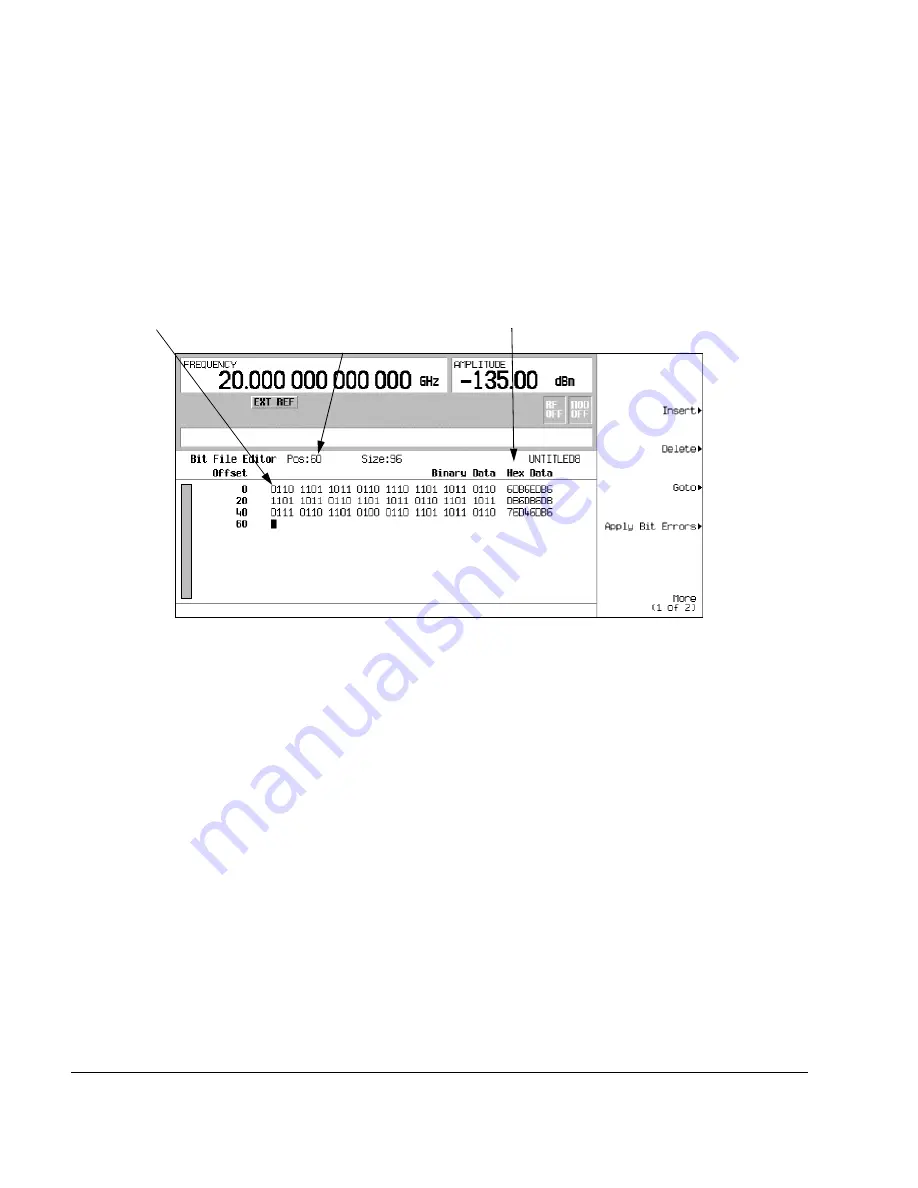
150
Chapter 7
Custom Real Time I/Q Baseband
Working with Data Patterns
3. Enter the 32 bit values shown using the numeric keypad.
Bit data is entered into the Bit File Editor in 1-bit format. The current hexadecimal value of the binary
data is shown in the
Hex Data
column and the cursor position (in hexadecimal) is shown in the
Position
indicator.
4. Press
More (1 of 2)
>
Rename
>
Editing Keys
>
Clear Text
.
5. Enter a file name (for example,
USER1
) using the alpha keys and the numeric keypad.
6. Press
Enter
.
The user file should be renamed and stored to the Memory Catalog with the name
USER1
.
Selecting a Data Pattern User File from the Catalog of Bit Files
In this procedure, you learn how to select a data pattern user file from the Catalog of Bit Files. If you have
not created and stored a user-defined data file, complete the steps in the previous section,
“Creating a Data
Pattern User File with the Bit File Editor” on page 149
.
1. Press
Preset
.
2. Press
Mode
> Custom >
Real Time I/Q Baseband
>
Data
>
User File
.
3. Highlight the file to be selected (for example,
USER1)
.
4. Press
Edit File
.
The
Bit File Editor
should open the selected file (for example,
USER1)
.
Enter These Bit Values
Hexadecimal Data
Cursor Position
Содержание E8247C
Страница 10: ...Contents x ...
Страница 96: ...86 Chapter 4 Analog Modulation Configuring the LF Output ...
Страница 127: ...Chapter 5 117 Dual Arbitrary Waveform Generator Using Waveform Clipping Figure 5 16 Rectangular Clipping ...
Страница 128: ...118 Chapter 5 Dual Arbitrary Waveform Generator Using Waveform Clipping Figure 5 17 Reduction of Peak to Average Power ...
Страница 142: ...132 Chapter 6 Custom Arb Waveform Generator Working with Filters ...
Страница 178: ...168 Chapter 7 Custom Real Time I Q Baseband Working with Differential Data Encoding ...
Страница 198: ...188 Chapter 10 Troubleshooting ...
Страница 214: ...204 Chapter 10 Troubleshooting Returning a Signal Generator to Agilent Technologies ...






























